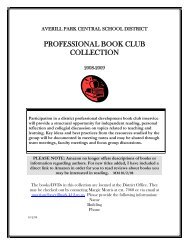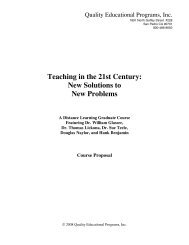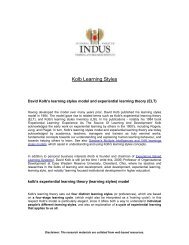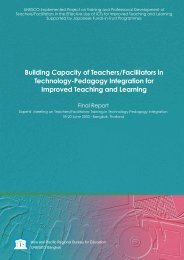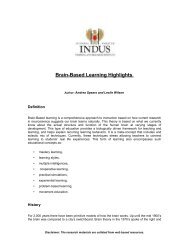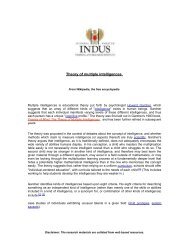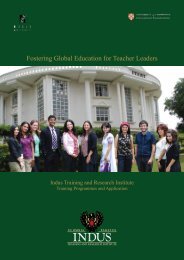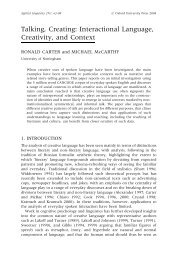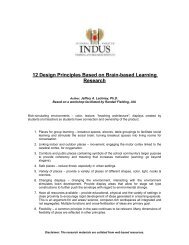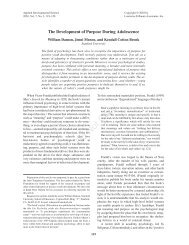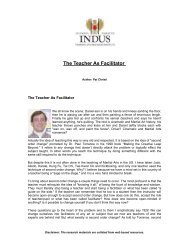Primary Years Programme Making the PYP happen - ITARI
Primary Years Programme Making the PYP happen - ITARI
Primary Years Programme Making the PYP happen - ITARI
- No tags were found...
You also want an ePaper? Increase the reach of your titles
YUMPU automatically turns print PDFs into web optimized ePapers that Google loves.
<strong>Making</strong> <strong>the</strong> <strong>PYP</strong> <strong>happen</strong><br />
Good language practice<br />
What is a <strong>PYP</strong> language classroom like<br />
The <strong>PYP</strong> language classroom is a place where language in all its forms is clearly in evidence. There is a<br />
busy hum of discussion. The observer is tempted by <strong>the</strong> inviting book corner, well stocked with reference<br />
books, picture books, story books, poetry books, children’s self-made books and books in a variety of<br />
languages. Displays include a wide variety of print, including students’ writing, author of <strong>the</strong> month,<br />
questions from <strong>the</strong> current unit of inquiry, posters, charts, calendars, memoranda and instructions. The<br />
listening centre is freely accessible, with a range of fiction and non-fiction audio cassettes available. The<br />
clearly labelled writing centre is equipped with a range of materials and equipment—a word processor and<br />
printer, a typewriter, different types of paper, envelopes, blank forms, card, bookbinding tape and<br />
ready-made blank books.<br />
How does a <strong>PYP</strong> language classroom work<br />
Students are engrossed in books at tables, in <strong>the</strong> book corner and in <strong>the</strong> quiet area outside <strong>the</strong> classroom;<br />
<strong>the</strong>y move purposefully between <strong>the</strong> classroom and <strong>the</strong> quiet area as <strong>the</strong> task demands, switching readily<br />
from individual study to group discussion, seeking advice and comment from peers and teacher as needed.<br />
Writing is a significant activity in classes of all ages, with younger students comfortably making<br />
independent attempts at spelling, and delighting in sending letters, annotating pictures and making books,<br />
while older students work at various stages of <strong>the</strong> writing process, drafting, revising and editing imaginative<br />
stories, expressive poetry, science reports, personal journals and reading responses.<br />
The teacher switches flexibly between individual, group and whole class work. The underlying organization<br />
and sense of purpose are clear. The teacher moves easily among <strong>the</strong> students, working with a group to<br />
brainstorm pre-writing ideas, sitting for a while longer to help a reluctant writer to begin, pausing to assist<br />
with an individual editing question, ga<strong>the</strong>ring specific students for a group conferencing session, turning to<br />
advise on an appropriate reference source, collecting <strong>the</strong> whole class for a summarizing session. The teacher<br />
models appropriate behavioural and learning attitudes, speaking and listening respectfully, referring to<br />
reference sources when appropriate, enthusiastically sharing ideas about a favourite novel, posing questions<br />
on <strong>the</strong> current unit of inquiry, skillfully guiding students’ lines of questioning, encouraging divergent<br />
thinking, sensitively supporting all individuals to aim for <strong>the</strong>ir best.<br />
Language is <strong>the</strong> medium of inquiry. In an inquiry-based <strong>PYP</strong> classroom, teacher and students enjoy using<br />
language, appreciating it both aes<strong>the</strong>tically and functionally. Literature is an integral part of <strong>the</strong><br />
curriculum—a series of books read as an author study, host-country fairy tales as part of a social studies<br />
unit, a biography as <strong>the</strong> base for a science investigation, early years counting stories as reinforcement for<br />
ma<strong>the</strong>matics development, comparison of illustration techniques to encourage acquisition of art skills.<br />
Books are not only enjoyed, <strong>the</strong>y are also discussed and analysed, compared and contrasted.<br />
Why is a <strong>PYP</strong> language classroom <strong>the</strong> way it is<br />
Language is a key factor in <strong>the</strong> development of international understanding and, as such, has a major role in<br />
a <strong>PYP</strong> classroom. <strong>PYP</strong> students will commonly be familiar with two or more languages, <strong>the</strong> learning of each<br />
being interdependent. The <strong>PYP</strong> classroom values and supports <strong>the</strong> mo<strong>the</strong>r tongue and <strong>the</strong> language of<br />
instruction and also aims to extend <strong>the</strong> students’ access to o<strong>the</strong>r languages.<br />
The <strong>PYP</strong> classroom is flexible enough to cater for a wider than usual range of language and literacy<br />
development: because <strong>the</strong>re are so many variables in <strong>the</strong> students’ backgrounds and experience, it is likely<br />
that, even in a single age group of students, <strong>the</strong>re will be enormous diversity in <strong>the</strong>ir levels of language and<br />
literacy development. This is fur<strong>the</strong>r affected by <strong>the</strong> fact that students may often be working in <strong>the</strong>ir second<br />
or third language; but <strong>the</strong> fundamental objectives of responsible, competent, confident communication are<br />
common to each.<br />
© IBO 2000 75



